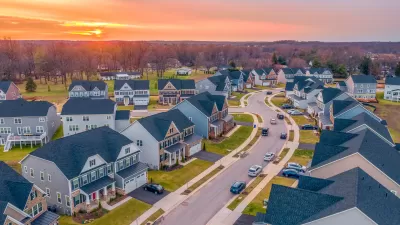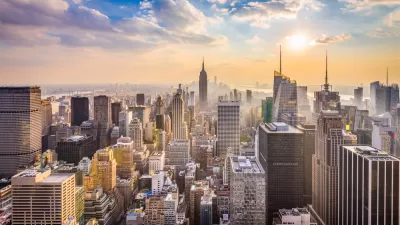If projections about remote work hold true, the resulting migration could shift economic centers, disperse housing market pressures, and transform the politics of small communities.

The lasting impact of remote work could alter the shape and character of U.S. communities, according to a piece by Jerusalem Demsas, as workers loosen their ties to physical offices and the power of economic clusters becomes dispersed across wider geographic areas.
As households with the means to relocate move to smaller, more affordable communities, they create new clusters of opportunities for businesses and services in their new homes. But the size of this shift will depend on how many companies decide remote work works for them. "For remote work to delink where people live from where they work, it’s likely not enough for just one biotech firm to decide its employees can work from home full time. A bunch of firms in that industry would need to make that shift," explains Demsas.
If predictions that 20 percent or so of American jobs will go remote holds true, it could lead to significant changes in how and where people live and work. As we've seen, the pandemic accelerated sharp spikes in housing costs in an already constrained housing market. "And while there has been some progress in recent years — notably on the West Coast — as of May 2021, the country has a shortage of about 3.8 million homes, with the problem concentrated in the metropolitan regions with the most valuable labor markets." Remote work could alleviate pressure on the housing market in these cities, spread out demand, and reduce prices in urban cores while raising costs in peripheral areas.
Reduced density, meanwhile, could have a negative impact on the climate. Even if people work fully remotely, many suburban and rural areas lack the walkability and public transit that makes car-free life possible in some major cities. Mitigating the effects of sprawl requires a reimagining of the suburbs as more mixed-use, walkable, and transit-oriented.
Further, Demsas writes that widespread remote work could also alter the political landscape of the U.S., where political leanings are currently closely tied to the density of the voter's home city. Demographic shifts could change the balance of voters in communities large and small, while housing pressures and cultural change could lead to tensions between longtime residents and newcomers.
Policymakers can help: "Localities have the opportunity to reduce the economic costs of newcomers and preemptively bring down the temperature by liberalizing their zoning laws and investing in market rate and affordable housing as well as enacting anti-displacement measures in order to reduce the conflict." By investing in local infrastructure, ensuring equitable access to job opportunities and housing, and improving public amenities, governments can help make the transition less shocking and more equitable.
FULL STORY: 3 ways remote work could remake America

Alabama: Trump Terminates Settlements for Black Communities Harmed By Raw Sewage
Trump deemed the landmark civil rights agreement “illegal DEI and environmental justice policy.”

Planetizen Federal Action Tracker
A weekly monitor of how Trump’s orders and actions are impacting planners and planning in America.

Why Should We Subsidize Public Transportation?
Many public transit agencies face financial stress due to rising costs, declining fare revenue, and declining subsidies. Transit advocates must provide a strong business case for increasing public transit funding.

Understanding Road Diets
An explainer from Momentum highlights the advantages of reducing vehicle lanes in favor of more bike, transit, and pedestrian infrastructure.

New California Law Regulates Warehouse Pollution
A new law tightens building and emissions regulations for large distribution warehouses to mitigate air pollution and traffic in surrounding communities.

Phoenix Announces Opening Date for Light Rail Extension
The South Central extension will connect South Phoenix to downtown and other major hubs starting on June 7.
Urban Design for Planners 1: Software Tools
This six-course series explores essential urban design concepts using open source software and equips planners with the tools they need to participate fully in the urban design process.
Planning for Universal Design
Learn the tools for implementing Universal Design in planning regulations.
Caltrans
Smith Gee Studio
Institute for Housing and Urban Development Studies (IHS)
City of Grandview
Harvard GSD Executive Education
Toledo-Lucas County Plan Commissions
Salt Lake City
NYU Wagner Graduate School of Public Service





























